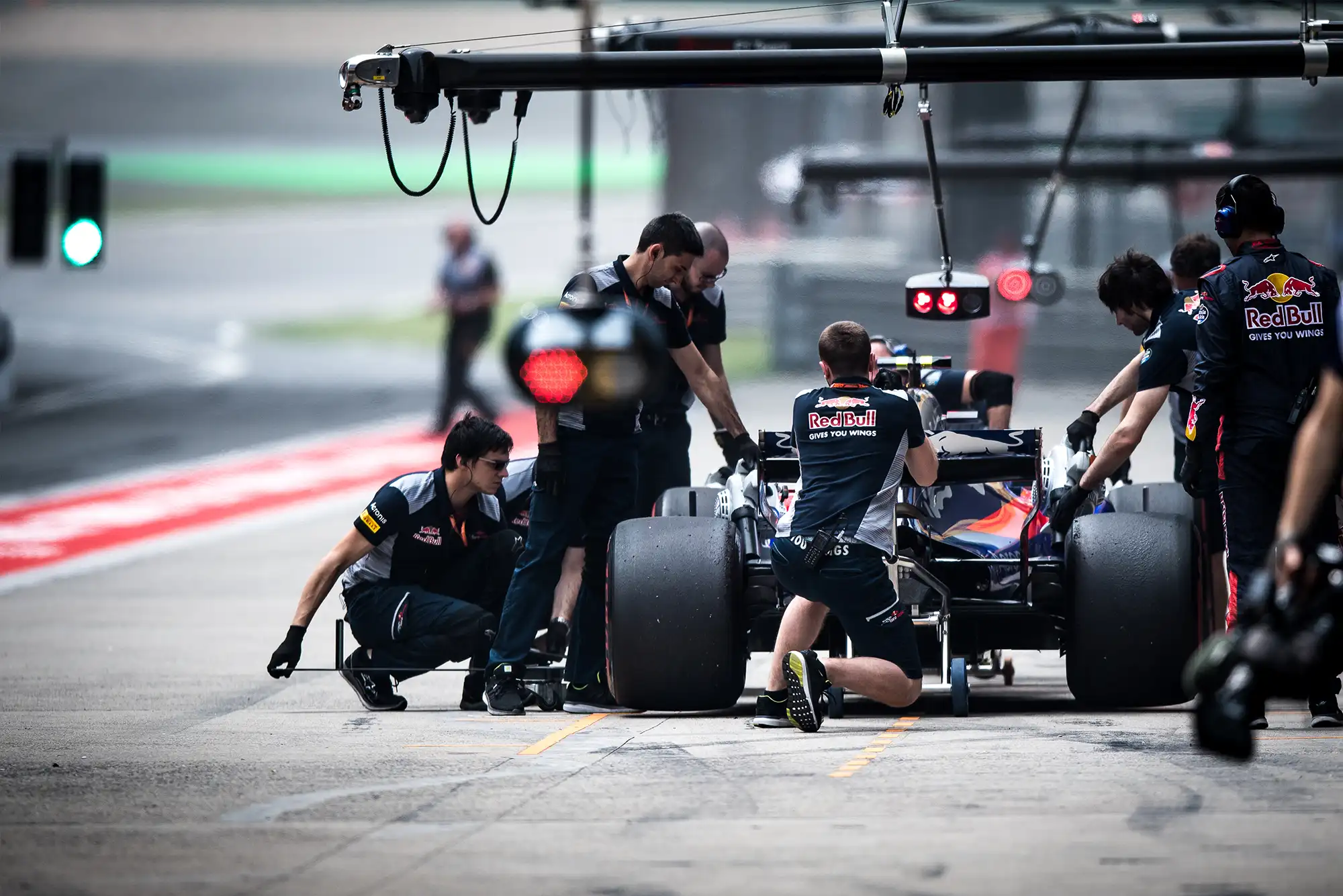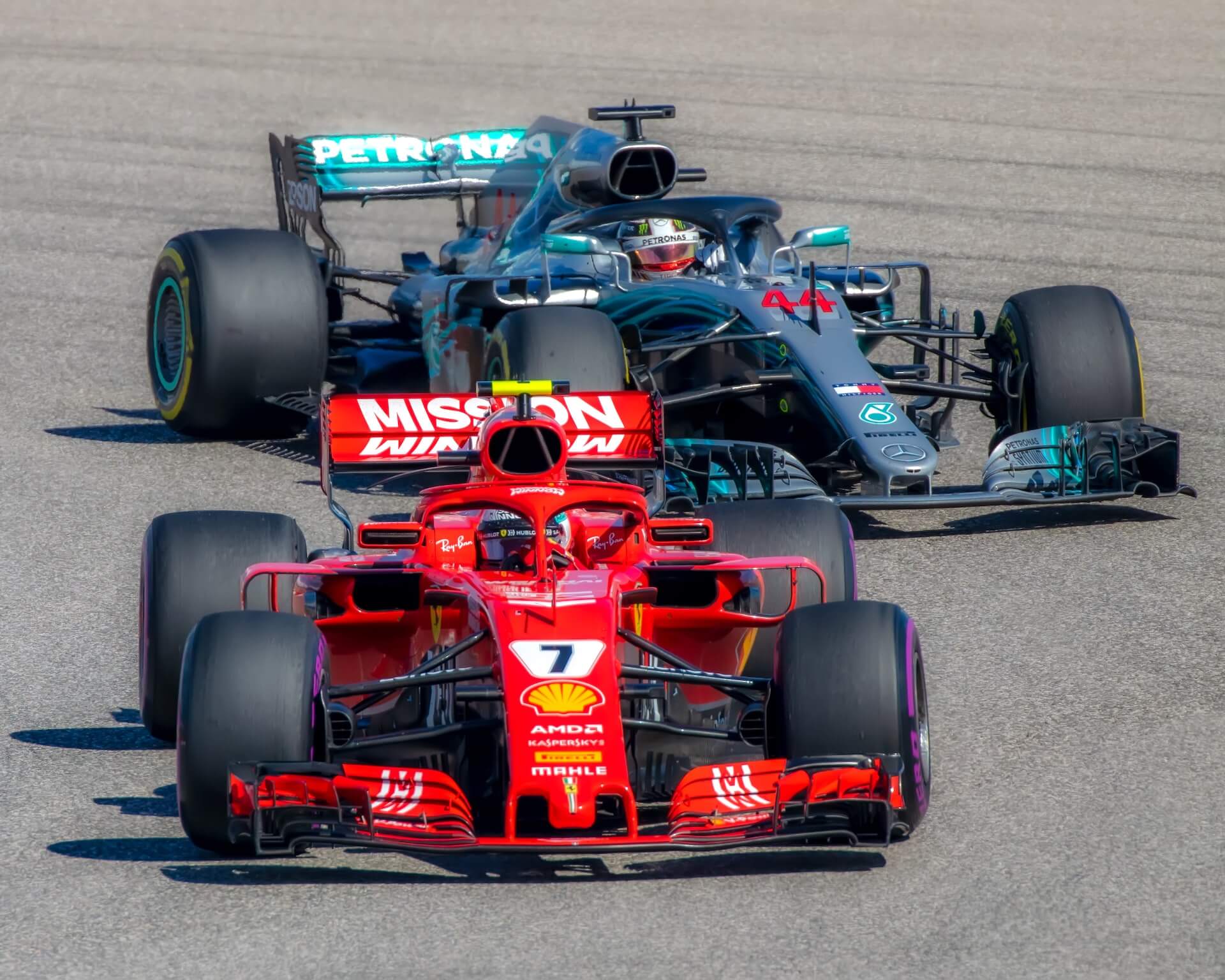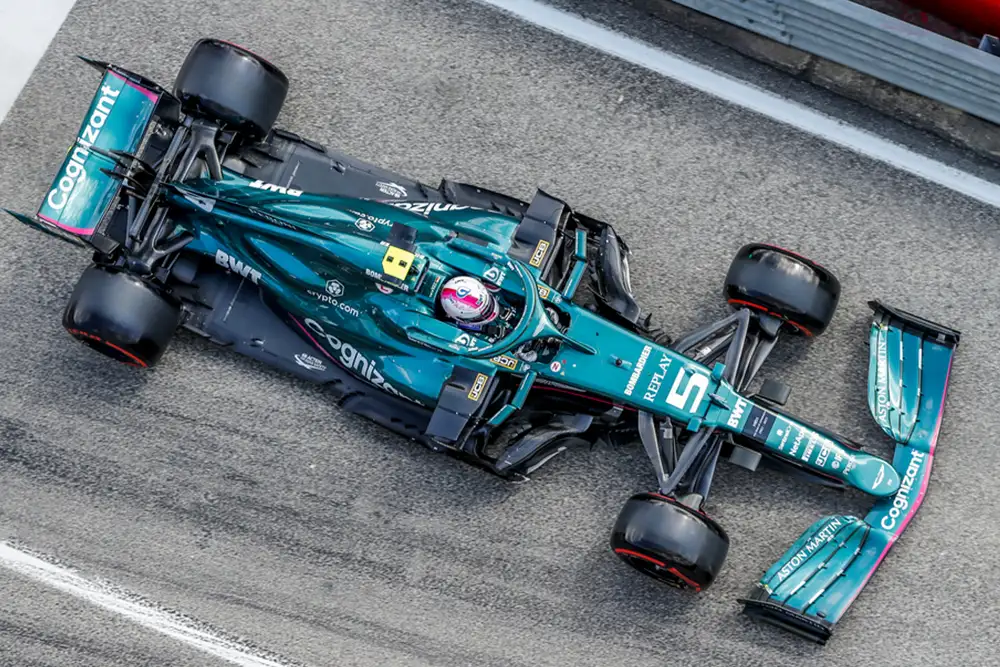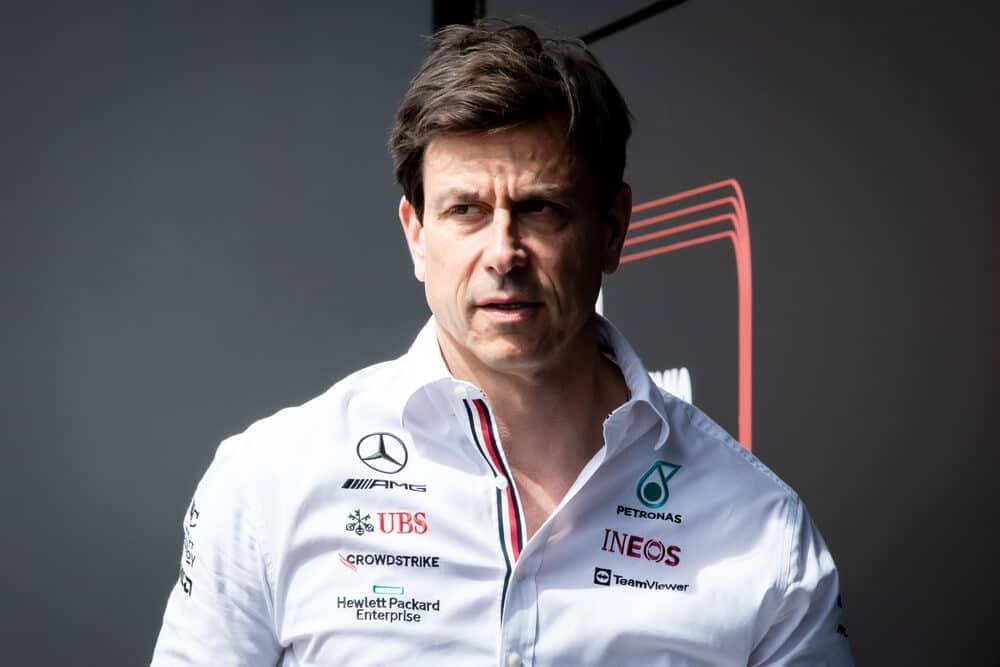No matter how well a Formula 1 car’s aerodynamics are designed to produce as much downforce as possible, or how well the suspension can handle taking corners at high speeds, straight line power is still one of the most important factors in a championship-winning car.
Formula 1 engineers spend countless hours perfecting the architecture and design of their engines, extracting as much power as possible from them to compete in the world’s most competitive motorsport.
In this article, we’ll look at how much horsepower an F1 car engine produce today, how they do it, and how they compare to previous years.
Table of Contents
Watch this video to learn more about a F1 cars horsepower.
How much horsepower does an F1 car have?
Today’s 1.6L V6 turbocharged engines, along with their electrical units, can produce around 1050 horsepower in an Formula 1 car. When combined with other F1 car characteristics such as drag, that power is sufficient to reach speeds well in excess of 225mph (360 km/h).
Key takeaways
While studying Formula 1 engines for years at university is the only way to fully comprehend the subject, here are some key snippets of information to be aware of:
- The Internal Combustion Engine (ICE) is the primary driving force behind producing all of that horsepower and is similar to ICEs found in modern sports and supercars.
- The ICE is also turbocharged, which forces more air into the engine to produce more power.
- While the ICE is the primary component, there are two energy recovery systems (ERS) in place to provide additional power.
- Because of changes to the 2022 rules engine development is halted until the 2026 season.
Ballast is simply defined as any material that is used to add weight to a vehicle. In Formula One, teams use ballast to adjust the weight distribution of their cars. This can be done by adding or removing weight from different parts of the car.
The main purpose of using ballast is to improve the car’s handling. By changing the weight distribution, teams can alter the car’s aerodynamics and suspension. This can help the car to be more stable in corners, and also improve straight-line speed.
One of the most important things to remember about ballast is that it is not permanent. Teams can add or remove ballast from their cars at any time during the season. This means that teams must constantly monitor the performance of their cars, and make changes as necessary.
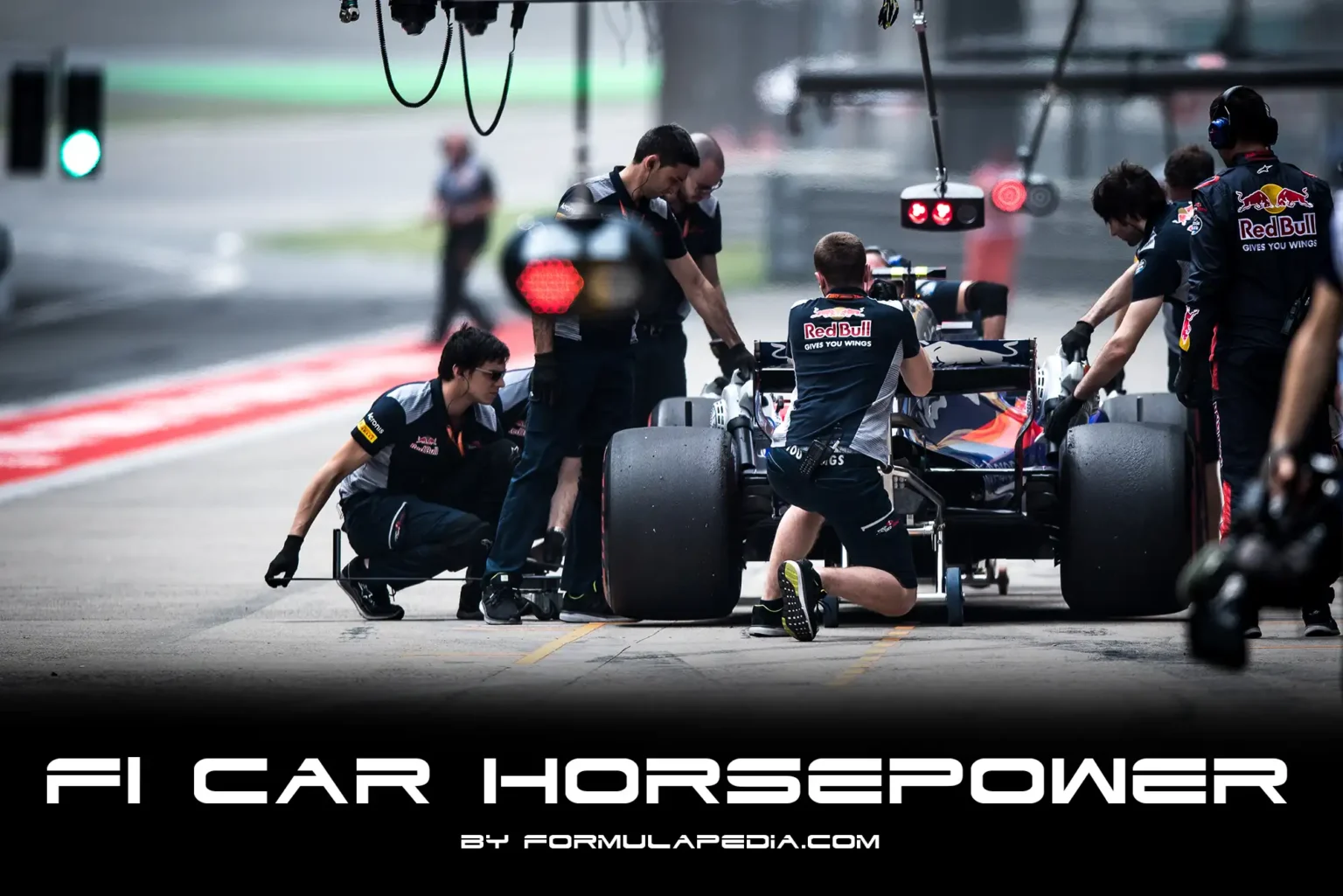
Understand how horsepower works in a Formula 1 car
Below, we go into depth and explain how horsepower works in a Formula 1 car and its engine.
What is horsepower (HP)?
Before we get into how an F1 car generates horsepower, it’s important to understand what horsepower is.
Horsepower (hp) is a unit of measurement for power or the rate at which work is done, typically in reference to an engine or motor. Mechanical horsepower (or imperial horsepower), which is approximately 745.7 watts, is one common definition used today.
One mechanical horsepower is equivalent to the energy required to lift 550 pounds (250kg) by one foot in one second.
RPM vs Torque
Horsepower is easily measured by multiplying the revolutions per minute (RPM) of engine’s crankshaft by torque, which is a measurement of rotational force, and dividing both by a constant (the constant changes depending on the units used).
As a result, peak horsepower is achieved when both RPM and torque are at their maximum.
The situation is complicated by the fact that, unlike RPM, torque does not increase linearly and actually decreases at higher RPMs. Engineers are forced to play chicken in order to achieve a balance between the two, which brings us to the power band.
The Power Band
An engine’s power band is the range of operating speeds at which the engine or motor can produce the most power.
Specifically, the power band is the range of RPMs around peak power output. An internal combustion engine’s power band typically begins in the midrange engine speeds where maximum torque is produced and ends below the redline after reaching maximum RPM.
The torque in the ICE is low at idle, reaches a maximum value more or less in the midrange of RPM, and then drops sharply toward the redline.
Before we get into how an F1 car generates horsepower, it's important to understand what horsepower is.
Basic components for a F1 engine
We’ve already gone over the components of an F1 power unit, so let’s take a closer look at how everything works. We also recommend you to read our article about all different Formula 1 engine suppliers.
ICE
In an internal combustion engine, the expansion of the high-temperature and high-pressure gases produced by combustion applies direct force to to pistons, of which there are six in current F1 engines.
The ICE spins the crankshaft, which in turn spins the wheels after passing through a series of gears, also known as the transmission.
The F1 ICE engine is a four-stroke unit. A four-stroke cycle engine is one that uses four distinct piston strokes to complete one operating cycle (intake, compression, power, and exhaust).
To complete one operating cycle, the piston makes two complete passes through the cylinder.
Turbocharger
As previously stated, the turbocharger contributes to increased power by forcing air into the engine.
It consists of two major components: the turbine and the compressor.
The turbine section generates rotational force to power the compressor, and it is powered by the ICE’s exhaust gasses.
That energy is then used by the compressor to draw outside air into the engine’s intake system, pressurize it, and feed it into the combustion chambers.
MGU-K
The MGU-H is an evolved part of a turbocharger that harvests thermal energy from an F1 car’s exhaust.
The MGU-H is made of magnets that spin around when it’s filled with exhaust gas. Those magnets produce electrical energy, which is then stored in a battery, ready to be used when needed.
Having said that, the MGU-H can also function as a motor in some situations.
If you’re familiar with turbos, you’ve probably heard of the phenomenon known as turbo lag. When a driver steps on the accelerator, it usually takes a second or two for the turbine to spin up and respond the throttle input. The MGU-H steps in, acting like a motor to eliminate turbo lag by providing power.
MGU-H
The MGU-K is an evolution of the original KERS unit and looks a lot like the MGU-H but is attached to the crankshaft rather than the turbocharger.
When a driver presses the accelerator, the MGU-K transforms into a motor that augments the engine’s power. It adds about 161 horsepower to the car’s total output when activated, but it can only be activated for brief periods of time.
It, too, is made up of spinning magnets, but the MGU-K uses those magnets to harvest kinetic energy from the crankshaft. This allows drivers to slow down more quickly due to the increased resistance, and it also adds energy to the car’s batteries.
Frequently asked questions
What F1 car has the most horsepower?
Is there a horsepower limit in F1?
What is the most powerful engine ever in Formula 1?
How big is a F1 engine?
Did F1 engines have more horsepower in the past compared to today?
Conclusion
Formula 1 engines are complex pieces of machinery that play a significant role in championship battles, but it is important to remember that power is not everything.
Yes, it is much easier to pass your opponents down the straights, but cornering can be just as important in determining the champion.
Learn more about Formula One
Want to learn more about F1? Then visit our Formula 1 glossary and dictionary.

